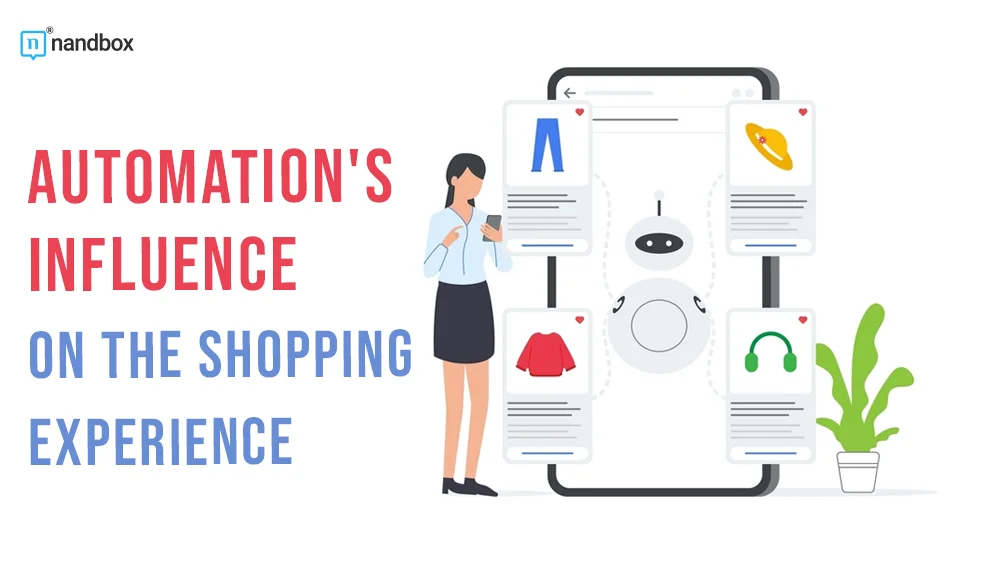In the ever-evolving landscape of retail, automation has emerged as a transformative force, reshaping the way consumers shop and businesses operate. From online platforms to brick-and-mortar stores, retail automation technologies are revolutionizing the shopping experience in unprecedented ways. This article delves into the various facets of automation and its profound impact on retail, exploring how it is redefining the way we buy and sell goods.
Enhanced Convenience Through E-commerce
One of the most apparent ways automation has transformed the shopping experience is through the proliferation of e-commerce platforms. Also, online marketplaces, powered by sophisticated algorithms and automation tools, offer consumers unparalleled convenience and choice. With just a few clicks or taps, shoppers can browse vast product catalogs, compare prices, read reviews, and make purchases from the comfort of their homes or on the go.
Automation has enabled retailers to streamline the entire shopping process, from inventory management and order fulfillment to personalized recommendations and customer support. Advanced algorithms analyze user data to offer tailored product suggestions, leading to higher customer satisfaction and increased sales. Moreover, automated logistics systems ensure swift and efficient delivery, often with options for same-day delivery or next-day shipping, further enhancing the convenience of online shopping.
Innovations in Physical Retail Spaces
While e-commerce continues to flourish, automation is also reshaping the traditional brick-and-mortar retail experience. Retailers are increasingly deploying cutting-edge technologies to enhance in-store efficiency, convenience, and engagement. Automated checkout systems, such as self-service kiosks and cashier-less stores, minimize wait times and streamline the payment process, providing shoppers with a seamless and frictionless experience. Kiosk surveys are also a great way for retailers to collect feedback from shoppers.
Furthermore, advancements in augmented reality (AR) and virtual reality (VR) are revolutionizing the way consumers interact with products in physical stores. AR applications allow shoppers to visualize how furniture would look in their homes or try on virtual clothing, bridging the gap between the online and offline shopping experience. VR experiences offer immersive product demonstrations and virtual storefronts, enabling retailers to create memorable and interactive shopping environments.
Robotics and AI-Powered Storage Solutions
Automated storage and retrieval systems (AS/RS) are at the forefront of warehouse automation, offering unparalleled efficiency and scalability. These systems utilize robotic arms, conveyor belts, and automated guided vehicles (AGVs) to transport goods within the warehouse with precision and speed. AI-powered algorithms orchestrate the movement of inventory, optimizing storage locations based on factors such as demand forecasts, SKU velocity, and order priorities.
One of the key advantages of automated vertical storage systems is their ability to maximize space utilization. Vertical lift modules (VLMs) and automated vertical carousels enable retailers to store goods in compact, high-density configurations, minimizing the footprint required for storage. This not only reduces warehouse storage rates and operating costs but also improves inventory visibility and accessibility, leading to faster order fulfillment and reduced labor requirements.
Personalization and Data-driven Insights
Automation is driving a paradigm shift towards personalized shopping experiences tailored to individual preferences and behaviors. By harnessing big data and machine learning algorithms, retailers can gather insights into consumer habits, preferences, and purchase histories. This data-driven approach enables them to deliver targeted marketing campaigns, personalized promotions, and curated product recommendations, fostering customer loyalty and driving sales.
Moreover, automation technologies empower retailers to optimize pricing strategies, inventory management, and supply chain operations. Real-time analytics and predictive algorithms help identify trends, forecast demand, and optimize pricing to maximize profitability. By leveraging automation to optimize every aspect of the retail value chain, businesses can stay agile, competitive, and responsive to evolving market dynamics.
The Future of Retail Automation
As automation continues to evolve, the future of retail promises even more radical transformations. Innovations such as drone delivery, robotic warehouses, and autonomous vehicles are poised to revolutionize last-mile logistics, making delivery faster, cheaper, and more efficient. Automated inventory management systems powered by artificial intelligence (AI) and robotics will enable retailers to minimize stockouts, reduce waste, and optimize shelf space.
Furthermore, advancements in natural language processing (NLP) and conversational AI are driving the rise of virtual shopping assistants and chatbots. These AI-powered interfaces can provide personalized product recommendations, answer customer inquiries, and facilitate transactions through natural language interactions. Virtual assistants offer round-the-clock support, enhancing customer service and driving engagement across digital channels.
Challenges and Considerations
Despite the numerous benefits of automation in retail, there are also challenges and considerations that businesses must navigate. Concerns about data privacy and security require robust measures to safeguard sensitive customer information. Moreover, the displacement of jobs due to automation raises questions about workforce reskilling and job displacement. Retailers must prioritize ethical considerations and ensure that automation benefits both consumers and employees alike.
In conclusion, automation is revolutionizing the shopping experience across online and offline channels, enhancing convenience, personalization, and efficiency. From e-commerce platforms to physical retail spaces, automation technologies are reshaping the way consumers interact with brands and products. By embracing automation and leveraging emerging technologies, retailers can stay ahead of the curve, delivering exceptional shopping experiences in the digital age.




